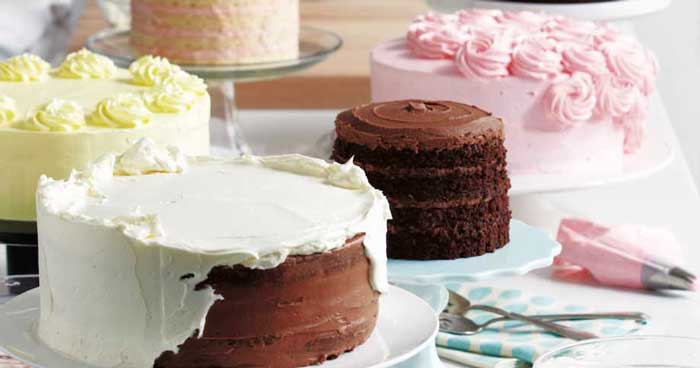Being able to bake the perfect cake is every baker’s dream, regardless if they have been doing this for a long time now or if they are new to baking.
However, baking is a very lengthy process, and it cannot be mastered overnight. When you bake, you will make mistakes, and those will lead your cake to not turning out the way you wanted it to.
One common problem that many beginners face is that they do not know how to keep cake from falling, and as a result, their cake does not stand properly. If this sounds like you, you do not have to worry anymore. We have got you covered with this article of ours!
How to Keep Cake from Falling
Below we will be looking at the various things you could do to prevent your cake from falling apart right after you take it out of the oven and the cake pan. Read on to find out how you can save your cake!

1. Take Precaution Against High Humidity
Where you are situated when you make your cake plays a significant role in what your cake will turn out to be like. For instance, if you are in an area where the humidity level is higher than usual, chances are that your cake will absorb more moisture, and the sides might cave in.
In order to prevent this from happening, you should keep the dry contents of your cake mix in the fridge whenever you are not using them.
2. Do Not Deviate from the Recipe
Every cake has a different recipe that it comes with, and that too for a very good reason. In order to achieve the exact cake that you are thinking of, all you need to do is strictly go by the recipe.
This is especially helpful if you are new to the world of baking. Since doing this, you will slowly start developing ideas of what you should be doing and why. The trick to getting your ideal kind of cake is to get the batter right.
Try not to make the cake mix too liquid-like since it will start rising faster, but once the cake begins to cool, it will sink in the middle. On the other hand, you should also keep in mind that too little moisture will do the exact opposite to your cake, which is also a problem.
When the cake batter does not have enough moisture locked in it, it will start to harden, and a dent will form at the center of the cake.

Side by side, you should also be mindful of how much baking soda or baking powder you are adding to your cake mix. As a rule of thumb, add 1-1.5 tsp. of baking powder to one whole cup of flour when you make the batter.
Do remember that you cannot use one instead of the other since baking powder and baking soda have two different uses.
In case if you are not sure whether your baking powder is still okay to use or not, try conducting a quick test on it, which goes as follows-
- Scoop up a teaspoon of baking powder.
- Place the spoon with the baking powder on it in a glass that is half-filled with hot water.
- Watch out for bubbles forming. If you see that a lot of bubbles are forming the moment the water comes in contact with the baking powder, then your leavening agent is still okay to use.
3. Do Not Overdo the Mixing
While it is extremely important that you mix the contents of your cake mix well, it is still equally as essential that you do not overdo this to a point where the batter gets stiff due to all the air trapped inside it.
You might be thinking that a stiff batter will ensure that your cake remains sturdy even during the later stages, but this is not the case. What actually happens is that once the cake has been baked and starts to cool, all the extra air trapped inside earlier will begin to be released.

As a result, the center part of the cake will lose its strength and will no longer be able to stay upright. Hence, the middle part of your cake will fall. One of the best ways to ensure that your batter is just the right amount of smooth is by folding the dry ingredients into the wet ones instead of going the other way around.
If you need to use an electronic mixer, make sure you turn it on at its lowest speed setting and finish using it in under 3 minutes or so.
4. Keep the Oven Pre-heated
The cake batter consists of baking powder and/or other leavening agents, which require heat to get fully activated and give your cake that extra volume. However, this does not mean that you should turn the heat on a few minutes before placing the cake pan along with the mix in the oven.
To fully ensure that all the heat gets evenly distributed throughout your batter, start heating the oven before you even begin working on the batter. Doing so will definitely prevent your cake from falling apart.
5. Leave Some Space
It is common knowledge that the batter will start to rise when the heat is applied to it since it contains leavening agents. However, regardless of knowing this, many bakers fail to leave some space between the top of their cake and the upper edge of the cake pan.
As a result, their cake batter rises so much that it flows out of the pan and causes all the cake to fall apart in the process.
6. Be Aware of the Timing
Putting the batter in the oven a bit too late or too early will affect the way your cake turns out in the end. By the time you are done folding the dry ingredients into the wet ones, all the necessary chemical reactions have already started.
To speed this process up and prevent your cake from falling, you should put the cake in the oven within the next 20 minutes to half an hour.
7. Use the Right Ingredients
For our very last tip of the day, we would like to tell you to keep an eye on what kind of ingredients you are using to make the batter. Two of the fundamental constituents of a cake batter are eggs and butter.
However, many times, it can be seen that bakers are using cold eggs for their batter instead of room-temperature ones. Incorporating cold eggs into your cake mix will actually cause tiny pockets to form in the batter, which will, later on, cause your cake to fall apart.
Side by side, you should also keep an eye on the butter’s temperature that you are using to make the batter. Similar to eggs, butter should also be added to the mix when it is at room temperature.
This is simply because butter at normal temperature is much easier to handle and mix than when it is cold. However, please refrain from trying to melt the butter in order to help speed up the process. Doing this will only increase the liquid quantity of your batter, and as a result, the cake might still fall or go bad.
Instead of melting the butter, take it out of the fridge (if you have not done this already) at least an hour or so before you start baking.
Depending on the temperature of the place that you are currently residing in, it might take more or even less time for your butter to reach the desired temperature.
Conclusion
That was all for our article for today. We hope we were able to teach you how to keep cake from falling so that your future baking experiences become a smoother process. Thank you for reading till the end. Happy baking!

